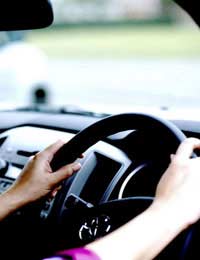Taxation of Company Cars Explained

A company car is a particularly popular benefit for many employees. The way in which an employee operates their company car policy will depend on the nature of the employment contract that has been negotiated, as well as the needs of the employee in relation to their work.
Operating a fleet can be an expensive proposition for a company, and the government is encouraging employers to look into other ways of providing transport for employees. However, it seems likely that company car fleets will not die out any time soon. That said, it is important to understand the tax implications of company cars, as these can have a serious effect on the cost of this benefit for both employer and employee. Furthermore, the tax treatment of a company car will vary depending on the nature of the use available to the employee.For Employees
Many jobs require employees to travel in the course of their employment. If an employee needs to drive for their job, they are entitled to mileage allowance, either from their employer or from HM Revenue and Customs.
This provides tax relief on a sum up to 40 pence per mile for the first 10,000 miles in a car or van, and 25 pence on every mile over this amount. However, many employees are reticent to use their own vehicle for work purposes, as it has implications for insurance and can end up costing more than the allowance as a result of the more rapid depreciation of the vehicle and the fact that other members of the employee's family will not have use of the vehicle during this period. As such, many employers offer company car packages to remedy this situation.If the company car is available to the employee solely for the purposes of employment, then no tax liability will arise. However, employees will have to pay tax if the company car (that is, a car which they do not own but of which they have use as a result of their employment) is also available for private use.
It should be noted from the outset that commuting to and from work counts as private use for tax purposes. The total tax liability is not firmly set out in the same way that mileage allowances are. Rather, the tax arising will depend on factors such as the price of the car; its CO2 emissions; any capital contribution made by the employee (that is, any sum paid by the employee at the start of the arrangement for use of the car); and what proportion of the year the employee has access to the car.The maximum tax liability for the employee is 35% of the price of the vehicle. However, this can be significantly reduced by a combination of the factors listed above. Furthermore, the government wishes to encourage the use of low emission cars wherever possible. As such, 'green' cars can frequently produce a tax liability of less than 15%.
For Employers
It should be noted that employers are likely to suffer some tax liability on a company car as well. An employer will be required to pay Class 1A National Insurance Contributions (NICs) on any chargeable benefit derived from the use of a company car. These contributions are calculated as a percentage of the cash equivalent of the benefit taken by the employee.
Employers should note the Class 1A NIC liability on each employee's P11D form, and HM Revenue and Customs will work out how much must be paid. You should remember, however, that there are different and complex rules regarding the use of cars for employees in the motor trade. If this affects you, you should read the extensive relevant guidance available from HMRC.Business Energy With a Difference
If you are looking for business energy or need advanced solutions like remote energy monitoring, new supplies, downgrading or upgrading capacity, have a no obligation chat with Purely Energy.
To find our more get in touch here. or call 0161 521 3400.







